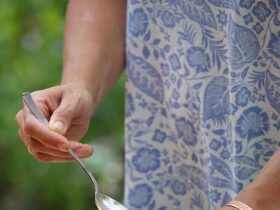Breast milk is the most nutritious and beneficial food for newborns. It provides all the necessary nutrients that infants need to grow and develop. However, many mothers may wonder how long breast milk can sit out before it spoils or becomes unsafe for their baby to consume.
According to the Centers for Disease Control and Prevention (CDC), breast milk can be safely stored at room temperature for up to four hours. If the temperature is higher than 77°F (25°C), breast milk should not be left out for more than two hours. After this time, it should be discarded. It is important to note that these guidelines apply to freshly expressed breast milk.
General Guidelines for Breast Milk Storage
Breast milk is a valuable source of nutrition for infants, and proper storage is essential to preserve its quality and safety. Here are some general guidelines for storing breast milk:
Room Temperature Storage
Breast milk can be stored at room temperature (between 60°F and 77°F) for up to 4 hours. However, it is recommended to use or refrigerate the milk as soon as possible after expressing it to maintain its nutritional value.
Refrigerated Storage
Breast milk can be stored in the refrigerator (at a temperature of 40°F or below) for up to 4 days. It is best to store the milk in the back of the refrigerator, where the temperature is most consistent. Breast milk can be refrigerated immediately after expression or kept at room temperature for up to 4 hours.
Frozen Storage
Breast milk can be stored in a freezer (at a temperature of 0°F or below) for up to 6 months. It is important to use appropriate storage containers, such as plastic or glass bottles or breast milk storage bags, and to leave some room at the top of the container for the milk to expand during freezing. It is also recommended to label the containers with the date of expression to ensure proper rotation.
Related
Factors Influencing Breast Milk Viability
Breast milk is a valuable source of infant nutrition, but several factors can influence its viability. Some of these factors include environmental conditions, container type, and previous storage handling.
Environmental Conditions
The viability of breast milk can be affected by the temperature and humidity of the environment in which it is stored. Breast milk should be stored in a cool and dry place, away from direct sunlight. Exposure to high temperatures can cause the milk to spoil, while exposure to high humidity can lead to the growth of bacteria.
Container Type
The type of container used to store breast milk can also influence its viability. It is recommended to use containers that are specifically designed for storing breast milk, such as plastic or glass bottles with tight-fitting lids. These containers should be cleaned and sterilized before use.
Previous Storage Handling
The way breast milk is handled and stored before being frozen or refrigerated can also affect its viability. It is important to use clean hands and equipment when expressing and collecting breast milk. Milk that has been left out at room temperature for too long should be discarded, as it may have become contaminated with bacteria.
Safety Precautions for Breast Milk Usage
Hygienic Handling
It is important to maintain hygiene while handling breast milk to avoid contamination and bacterial growth. Before expressing milk, wash your hands thoroughly with soap and water. Use clean containers and sterilize them by boiling them for 5-10 minutes or use a sterilizer. Avoid touching the inside of the container or the nipple with your hands. After expressing, store the milk in the refrigerator immediately.
Thawing and Warming Practices
When thawing frozen breast milk, it is important to do it safely to avoid any contamination. Thaw the milk in the refrigerator overnight or under running water. Do not use warm or hot water for thawing as it can destroy the nutrients in the milk. Once thawed, gently swirl the milk to mix the fat that may have separated.
When warming breast milk, do not use a microwave as it can cause hot spots that can burn the baby’s mouth. Instead, place the bottle in a bowl of warm water or use a bottle warmer. Test the temperature of the milk before feeding the baby by placing a drop on the inside of your wrist. It should feel warm, not hot.
Discarding Unused Milk
Breast milk can be stored in the refrigerator for up to 4 days and in the freezer for up to 6 months. However, if the milk has been left out at room temperature for more than 2 hours, it should be discarded. If the baby does not finish the milk in the bottle, the remaining milk should be discarded within 2 hours of feeding. Do not refreeze thawed breast milk.
Related








